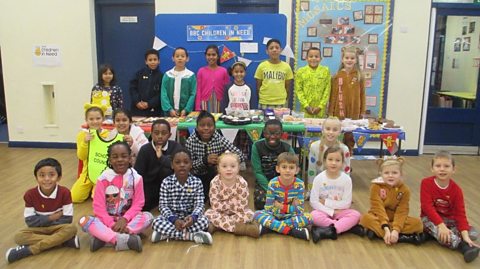
The children are really excited about it, everyone wants to come dressed up and they are really looking forward to it.
Every autumn schools across the UK join in with , helping to raise money for disadvantaged children around the UK.
In 2024 Children in Need Day takes place on Friday, 15 November.
ΒιΆΉΤΌΕΔ Teach asked these primary school teachers for their top tips on how to plan a day of Children in Need activities, and how you can tie events in with the curriculum.
Dan Slade - Lady Barn House School
Dan is Deputy Headteacher. Every year, his school in Greater Manchester has a Children in Need colour-themed own clothes day, special assemblies and visits from Pudsey Bear.
In 2021 they hosted a sponsored walk for all pupils in the park near the school.
βAt the outset we held a planning meeting between a colleague from the school office and myself to brainstorm potential ideas, with an eye to potential Covid disruption. We then took our agreed ideas to other colleagues during a weekly staff meeting."

βOne of our issues is the size of the school. We have three-form entry, four separate buildings and separate assemblies. So, we planned how we were going to communicate our plans: parental letters, our school charity councillors speaking with their peers, colleagues delivering information in assemblies and via form time.
We also held a poster competition over half term break to promote the event in school. Each key stage will have a winner and that poster will be used in that area of the school and on social media.
We have set up an online giving platform account for the event so that all monies from the event can be transferred electronically. The event will take place across the school day, allowing for each year group to take part.
The course is appropriate for each age group. We are also laying on a teddy bearsβ picnic for lunch time, so there are a variety of logistical considerations. Careful planning of lunch timings will work around the times of the walks.
After the event we will do a 'big reveal' [of the grand total raised] in school assemblies, and this will also be shared across our social media platforms, website and weekly newsletter. The event will also feature in our end-of-year βLady Barn Lifeβ yearbook, which is collated by Year 6 pupils."

Dan says the sponsored walk links in with the PE curriculum. Children use geography to use a map and negotiate the course, art to design the Children in Need promotional posters and English to gather information and write up the story for the school newsletter and yearbook.
Learning about caring and sharing for others also ties in with PSHE.
Danβs top tips for planning a Children in Need Day:###
- Involve the children from the outset. Let them have ownership of the event
- Perhaps set up a charity council, like we have, but carefully guide them, encourage them and provide sage advice β including risk assessments
- Do something fun, which every member of the school community can be part of
- Think broadly about how to communicate the message to the whole school community
- If possible, involve your parents on the day. We have arranged a sponsored coffee and cake van, which improves community spirit!

Fozia Shabbir - Scott Wilkie Primary School
Fozia teaches Year 1 at her school in East London. In 2021, she decided to help organise Children in Need Day because of her involvement with the school council, which is made up of pupil representatives from Years 1 to 6.
Fozia says she enjoys raising money and doing things for the community.
βPreviously we have had pyjama days but this year the school council wanted to do something different, because everyone has already spent a lot of time in their pyjamas! We are having a Strictly glitz and glamour fancy dress day.
βIt ties in with the art curriculum through children making posters and doing artwork around Pudsey Bear. In early years maths, we use Pudseyβs dots to practise the numbers one to five. It also ties into PSHE, with children learning about why they are fundraising and doing these activities.
The pupils feel good about raising money for children who are in need and knowing they have made a difference for somebody else.

βItβs not that hard to set up. You have to let the children and parents know well in advance in order to make sure itβs successful. Put up some posters and make sure staff are involved as well.
"Get the school council representatives to talk about the event, why it is important and how to get involved.
βOne of our challenges is we are in a deprived area, so not everyone donates, but we say you can donate whatever you can. It is also challenging just finding the time to do everything.
"When you are teaching in class you canβt always speak to the school council and do everything with them. They also have to come back to you with ideas of what their class wants to do.
βThe children get excited about it, everyone wants to come dressed up and they really look forward to it.β
Foziaβs top tips for planning a Children in Need Day:
- Plan well in advance
- Get the childrenβs views and make sure it is something they want to do
- Make sure the day is well advertised and parents know about it β put it in the newsletter and send out a letter or text reminding them
- Competitions usually help too. For example, see which class raises the most money, and then give them a prize.


Children in Need - Teaching Resources. collection
We've collated ideas for taking part and raising money with your primary school, as well as classroom resources for theming lessons around Children in Need.

Moodboosters. collection
New resources to get primary-aged children moving and learning about mental health and wellbeing.

The Regenerators. collection
ΒιΆΉΤΌΕΔ Bitesize has launched The Regenerators, an ambitious new initiative that will educate and inspire children, young people and families to take simple steps to build a greener future.
